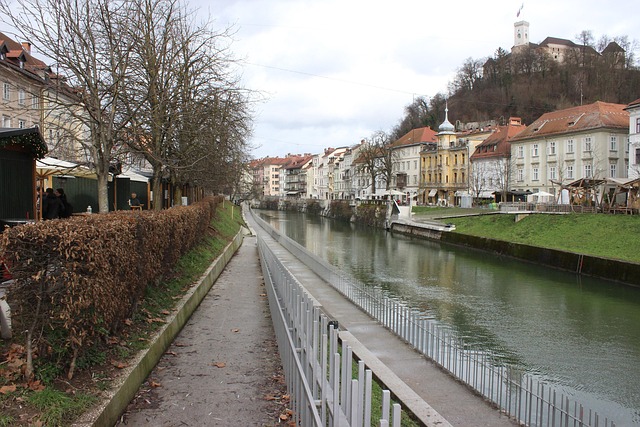Karachi, Pakistan's economic powerhouse, relies on a 4,000km road network. Scheme 33, led by KMC, tackles congestion and enhances safety with infrastructure overhaul. The project focuses on modern systems, smart solutions, and sustainable transport options to improve mobility and reduce emissions. With improved signage, lighting, and access, Karachi's roads are transforming, boosting economic growth and accessibility.
In the bustling metropolis of Karachi, Pakistan’s most vibrant city, the state of road infrastructure plays a pivotal role in shaping urban mobility. This article delves into Scheme 33, an innovative initiative aimed at enhancing Karachi’s road network. We explore its impact on traffic flow, safety, and overall urban development. By examining the strategies, benefits, and challenges, this piece offers valuable insights into transforming Karachi’s roads for a smoother future.
- Karachi's Road Network: An Overview
- Scheme 33: Enhancing Urban Mobility
- Infrastructure Development Strategies
- Benefits and Challenges of Scheme 33
Karachi's Road Network: An Overview

Karachi, Pakistan’s economic hub, boasts a vast and intricate road network that serves as the city’s lifeblood. This sprawling metropolis is characterized by bustling streets, highways, and byways, all playing a pivotal role in facilitating movement and connectivity within its boundaries. The road infrastructure of Karachi encompasses over 4,000 kilometers of paved roads, ranging from major arterial routes to local alleyways, each carrying immense traffic volumes daily.
The city’s network includes key thoroughfares like the Superhighway, N-5 National Highway, and the M9 Ring Road, which interconnect various neighborhoods, industrial zones, and commercial hubs. These major routes form the backbone of Karachi’s transportation system, while smaller roads provide access to residential areas and local markets, ensuring a complex web of connectivity that defines the urban landscape of this vibrant city.
Scheme 33: Enhancing Urban Mobility

Scheme 33, a groundbreaking initiative by the Karachi Metropolitan Corporation (KMC), is transforming urban mobility in Pakistan’s vibrant city. This innovative program aims to alleviate traffic congestion and improve road safety through a comprehensive overhaul of the city’s infrastructure. By focusing on enhancing road conditions, the scheme promises to deliver a more efficient and sustainable transportation network.
The project involves the reconstruction and maintenance of critical roads, introducing modern traffic management systems, and implementing smart solutions to optimize traffic flow. These efforts are crucial in addressing Karachi’s unique challenges, such as heavy vehicular traffic and inadequate road signage, ensuring safer and smoother journeys for residents and visitors alike. With Scheme 33, Karachi is taking a leap towards becoming a model metropolis for urban mobility.
Infrastructure Development Strategies

Karachi, Pakistan’s economic powerhouse, faces significant challenges in maintaining and improving its road infrastructure, crucial for efficient connectivity and urban mobility. The city’s rapid growth and increasing traffic congestion necessitate innovative strategies. One such approach is the implementation of a comprehensive road conditions Scheme 33, focusing on Infrastructure Development Strategies (IDS). These include the construction and upgrading of roads, introduction of smart transportation systems, and better integration of public and private transport networks.
The IDS for Karachi aim to enhance road safety, reduce travel times, and alleviate traffic jams by leveraging modern technologies. This involves expanding the network of well-maintained, multi-lane highways, improving street lighting, and integrating real-time traffic monitoring systems. Additionally, the scheme promotes sustainable transportation options, such as dedicated bike lanes and efficient public transport services, which can significantly cut down carbon emissions in this densely populated metropolis.
Benefits and Challenges of Scheme 33

Scheme 33, a transformative initiative in Karachi, brings about significant improvements in road conditions, offering numerous benefits to residents and visitors alike. One of its key advantages is enhanced safety; well-maintained roads with proper signage and lighting reduce accidents and improve overall mobility. This scheme also promotes economic growth by facilitating smoother transportation of goods and services, boosting local trade and tourism.
However, implementing Scheme 33 has not been without challenges. The primary hurdle has been managing traffic during construction, leading to temporary disruptions and delays. Additionally, ensuring the long-term sustainability of road repairs and maintenance requires continuous funding and effective management. Despite these obstacles, the positive impact on Karachi’s infrastructure is evident, paving the way for a safer and more accessible city.
Scheme 33 has emerged as a transformative initiative for Karachi’s urban mobility, addressing key infrastructure gaps in the city’s road network. By focusing on enhancing road conditions and connectivity, this scheme offers tangible benefits for residents and businesses alike, promising improved safety, reduced congestion, and efficient travel. However, successful implementation requires careful navigation of challenges, including financial constraints and community engagement, to ensure Karachi continues to evolve as a modern, well-connected metropolis.

Leave a Reply